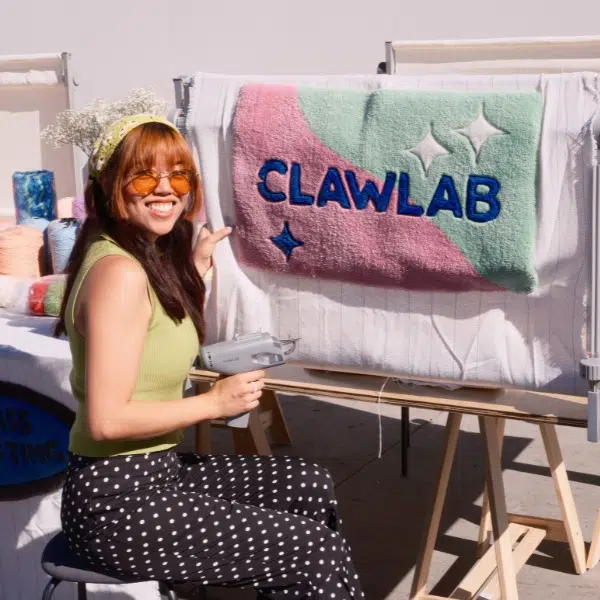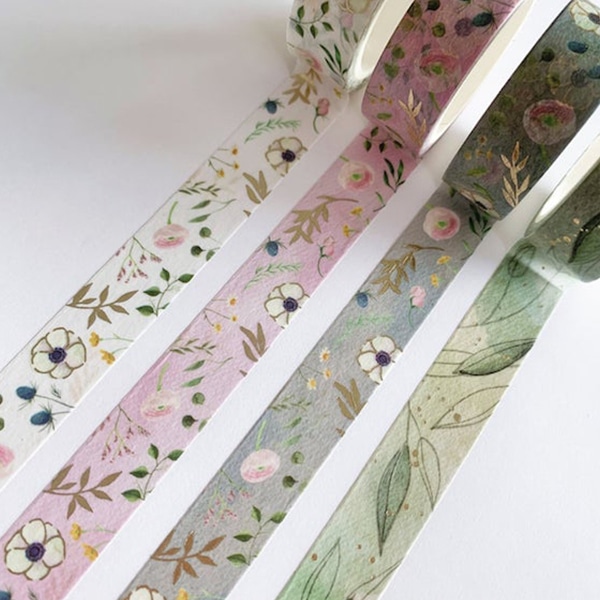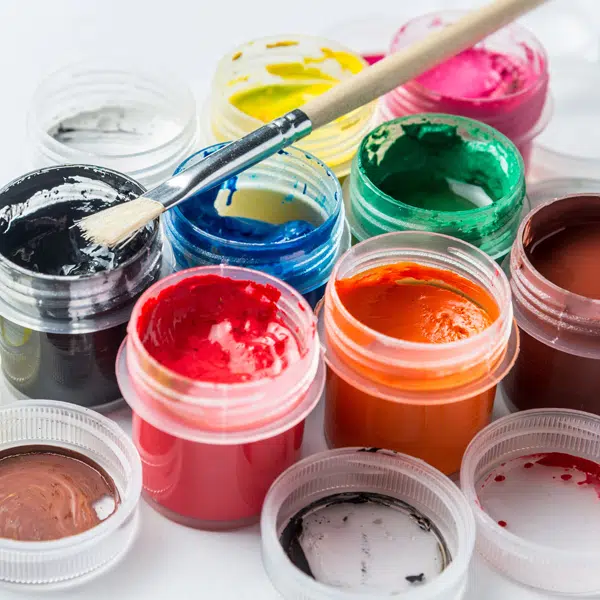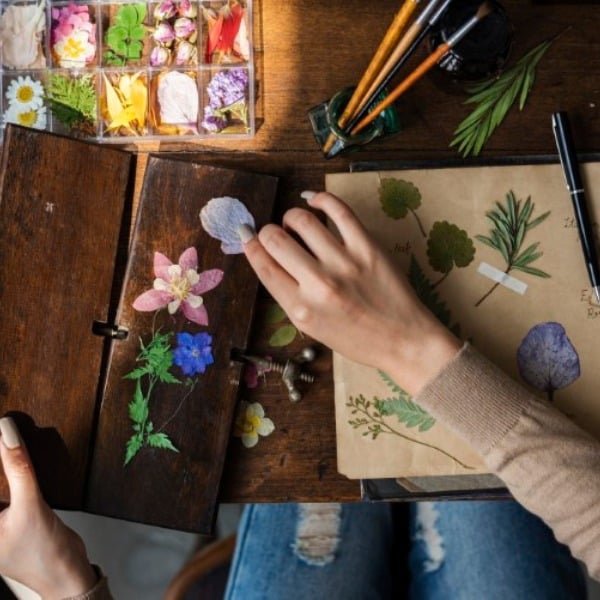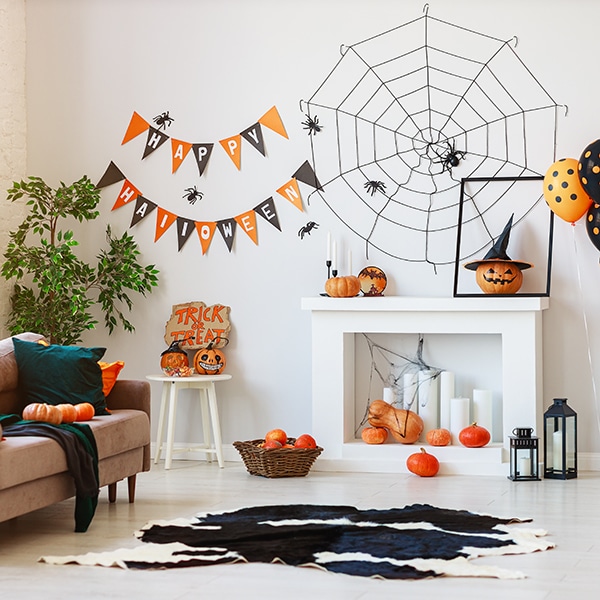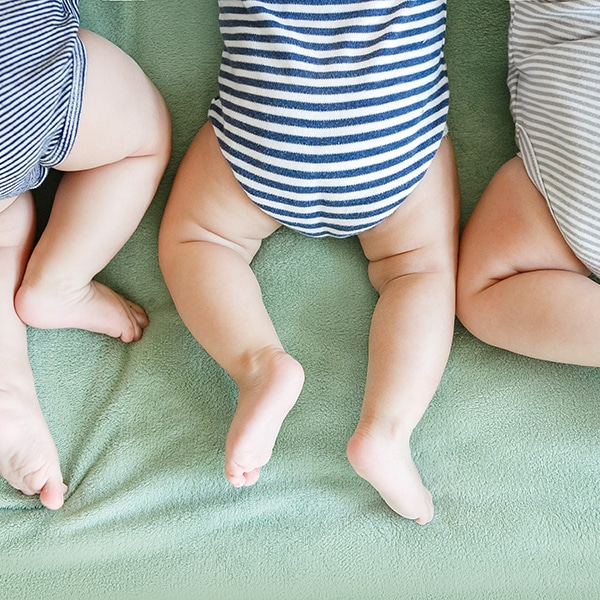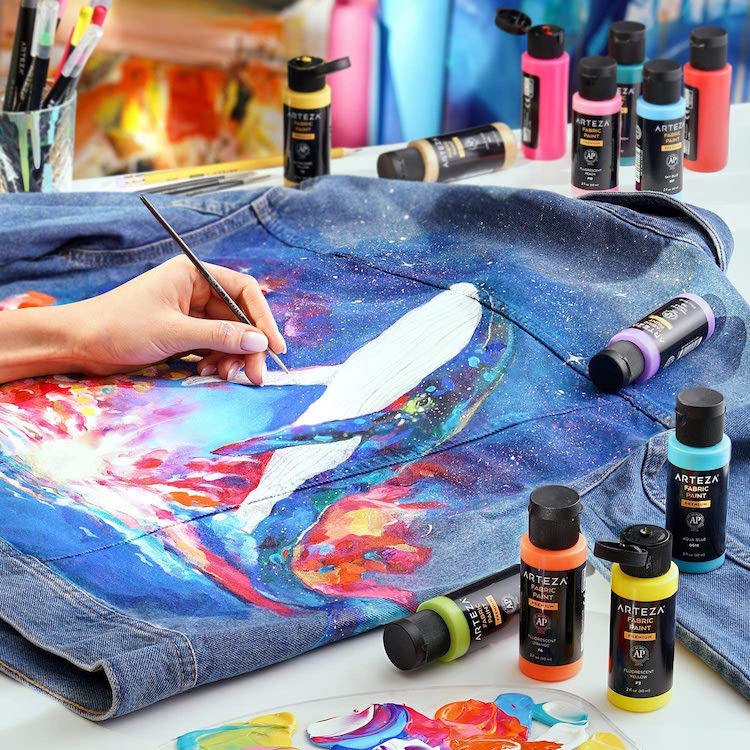
Photo: Arteza
This post may contain affiliate links. If you make a purchase, My Modern Met may earn an affiliate commission. Please read our disclosure for more info.
Embellishing clothing is one of the most creative ways to personalize your outfits. Painting on a shirt, pair of pants, or even a tote bag allows you to express yourself through imagery you won’t find anywhere else. And best of all, this is an easy DIY project that you can do with minimal supplies. All you need is a garment to decorate, some paintbrushes, and fabric paint.
Painting on clothing can give an otherwise ordinary garment a new lease on life. By virtue of personalizing it, you’re making it a special piece you’ll cherish for years to come. But you don’t have to wear the garment to reap the benefits of your fabric painting. Customizing a shorts pocket or the back of a jean jacket makes a great—and totally unique—gift.
The most common type of DIY fabric painting (and the most beginner friendly) is on natural fibers (such as cotton) or a 50/50 blend of natural and synthetic (such as cotton and polyester blend). Acrylic paint works well for this purpose, and if you already have a set of pigments you love, you are well on your way—you just need a special acrylic medium to make it suitable for fabric.
If you don’t have any fabric paints, that’s okay too. Scroll down to see what paint sets we recommend and learn the steps to decorating your clothes with art.
View this post on Instagram
What is the best paint for fabric?
If you already have paint…
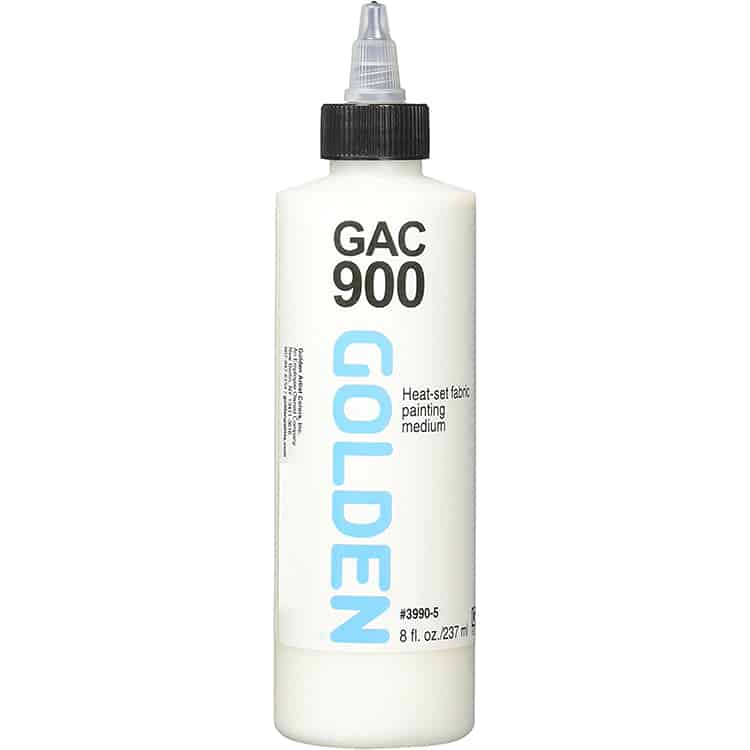
Golden | $15.99
Acrylic paint is suitable for natural fibers and blends. You’ll just want to add an acrylic medium to your pigment to fortify it for clothing. Called Golden Artist Colors GAC900, it is a heat-setting medium meant for adapting acrylic paints for clothing. It makes the painted garment softer to the touch and more durable in the laundry.
Like other mediums, you’ll want to mix it directly with the pigment. For a shinier surface finish, be generous with the amount you add to the pigment. But if you’d like to opt for a matte appearance, go for less. Once you’re done painting and everything is dried, you will want to seal it with heat (from an iron) to make it permanent.
If you need fabric paint…
The GAC900 medium is great if you already have paints on hand. If not, here are several highly rated paint sets to try. One thing to note about these sets is that they differ from the squeeze tubes you might’ve used at a craft night or slumber parties growing up. While the paint might be similar, the application will be with a brush or stamp. This offers you more control over your work.
Mont Marte Permanent Fabric Paint (Set of 8)
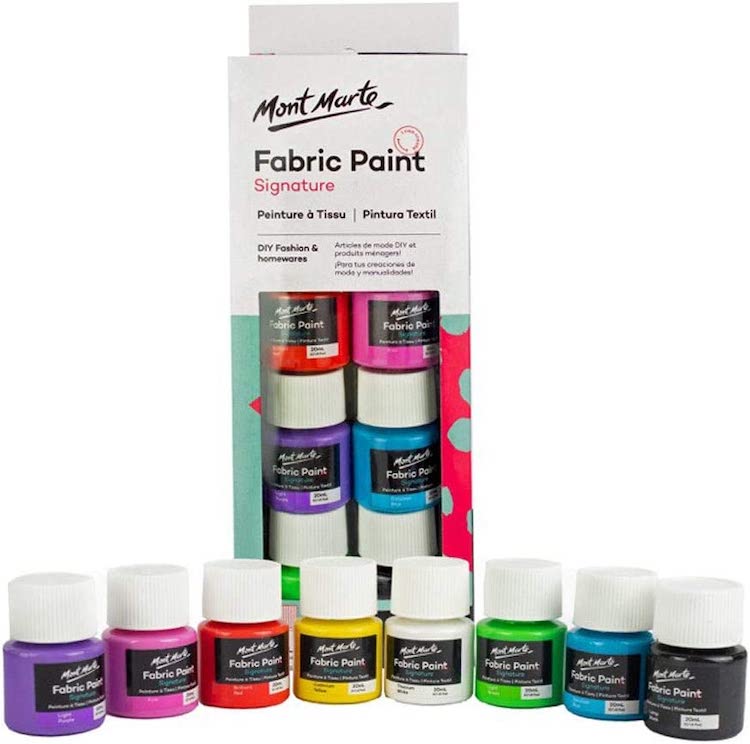
Mont Marte | $10.99
Available in sets ranging from eight to 36-count paints, this bright and creamy pigment is meant for DIY fashion and homewares. It has a glossy finish and is intended for covering large areas as well as depicting your fine details.
Magicfly Permanent Fabric Paint (Set of 14)

Magicfly | $22.99
Comprising a variety of colorful paints, this set is permanent and fast-drying and meant for t-shirts, jeans, and canvas shoes. There’s no heat set required and it is an anti-fading formula.
Jacquard Fabric Paint for Clothes (Set of 8)
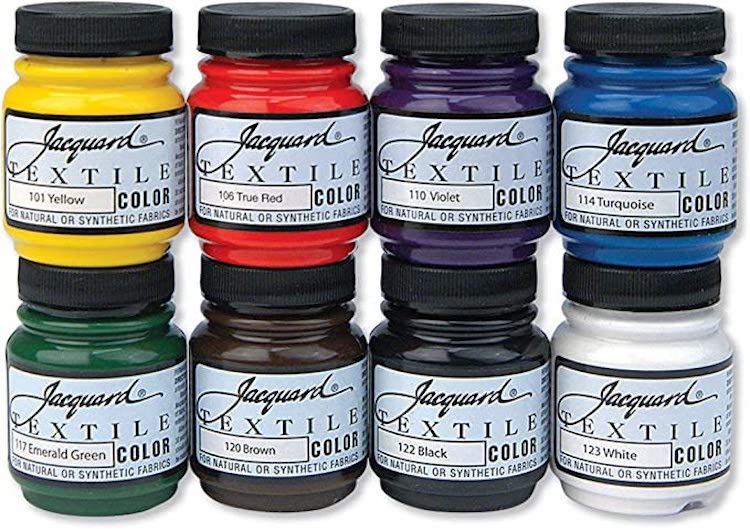
Jacquard | $31.16
These professional quality paints are specific for textiles (whereas other paint sets on this list can be used for glass, wood, etc.). The brand boasts to never chip, crack, or peel—even with repeated washing and wearing.
Arteza Permanent Fabric Paint (Set of 24)
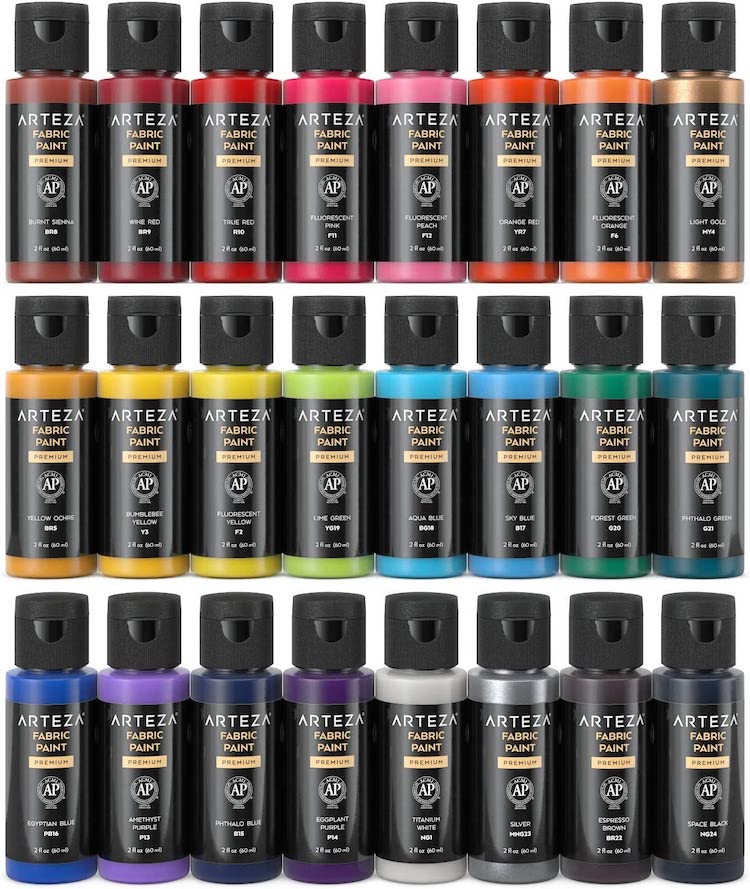
Arteza | $41.99
Get a wide-ranging color palette when you pick up this set from Arteza. It includes two metallics, four neons, and 18 classic paints. Setting the paint is easy; once your design has completely dried, iron your artwork to keep it from cracking or peeling.
FolkArt Brush on Fabric Paint Beginner Set (Set of 8)

FolkArt | $12.09
Great for fabric first-timers—and your wallet—this set of eight fabric paints has a smooth consistency that will make it easy to apply to fabrics. Once dry, your painted fabric can be washed in cold water to maintain its vibrance.
View this post on Instagram
Tips for How to Paint on Fabric
Painting on fabric has a lot of similarities to working on canvas. After all, a stretched canvas is cotton fabric (although it’s been primed and treated), but there are still some special steps you will want to take to ensure that your painting stands up to wear and wash.
Look beyond the paintbrush.
You’ll likely use a paintbrush when decorating your fabric, but don’t count out stencils and stamps. When using them, you can create a repeat pattern over your fabric.
Start with a plan.
Unfortunately, painting on fabric isn’t very forgiving. If you make a mistake—an errant brush stroke, for instance—it will be a challenge to completely remove it. Avoid this by creating a sketch of your design on paper. Draw what you’d like to paint and then place it on your fabric to see how it looks. Then, use chalk to lightly sketch it on the clothes. If you make a mistake, you can easily remove it. Another alternative is to try painting on some test fabric (if you have some) to get an idea of how the final piece will look.
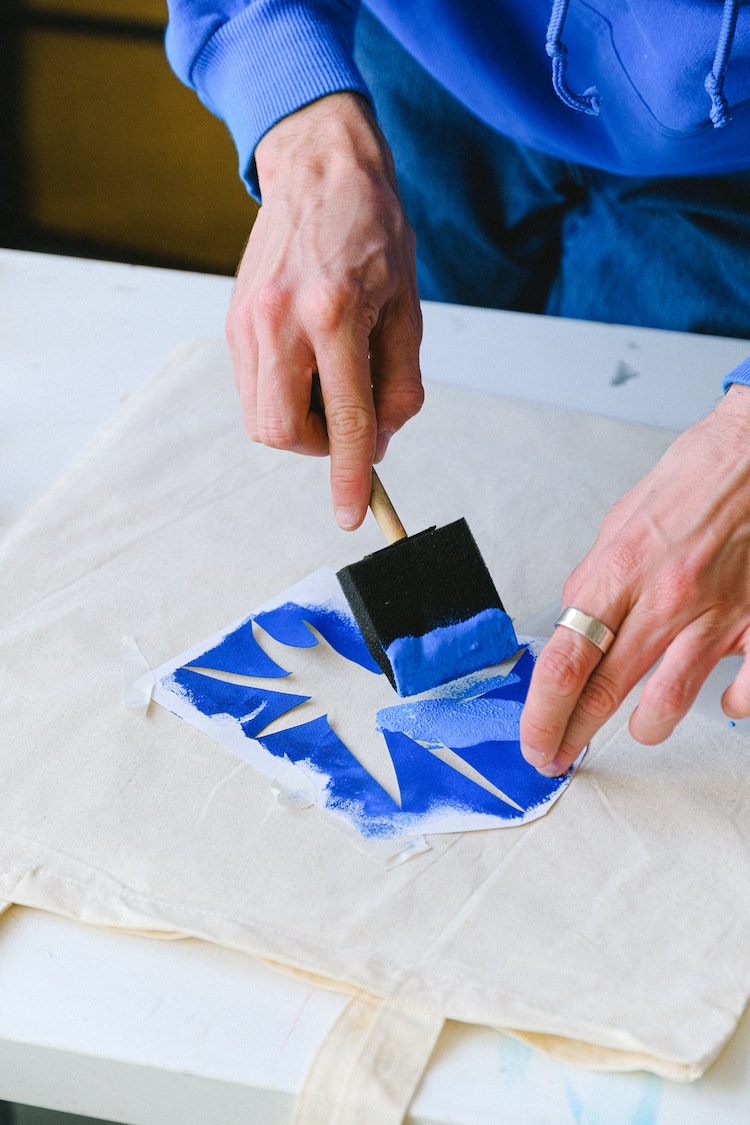
Photo: Anna Shvets
Protect the clothes you're working on.
Fabric paint can easily bleed onto other parts of your garment. Put cardboard underneath the area you are painting so that any excess paint gets on it and not another part of the fabric.
Select durable fabrics.
Cotton or natural fibers are the best fabrics to paint on using acrylic paint, and you can also use a 50/50 blend of natural and synthetic fibers. If your garment is new, make sure to pre-wash it to reduce any fabric shrinkage.
View this post on Instagram
It might take longer to apply the paint.
Because your fabric isn’t primed with gesso like a canvas, the paint will soak into the fabric. This will likely cause your images to appear darker and less saturated. Be prepared to apply multiple layers of paint to achieve the hue that you want. Alternatively, paint the first layer of your image with white paint (as a base) an then start with color.
Mimic watercolor with a wet-on-wet technique.
Achieve the carefree fluidity of watercolor when trying a wet-on-wet technique. Simply apply clean water to the area you’re intending to paint and then drop thinned pigment onto it. Watch as it spreads!
For lasting results, read the instructions.
Give your artwork enough time to dry (two to three days), and then refer to the instructions of your paint or medium for how to set the pigment. Some brands of paint might require heat while others want you to launder in cold water.
Related Articles:
Embroidery Artist Puts a Twist on Her Hoop Art by Stitching Fabric Photographs
7 Best Fabric Markers to Customize Your Clothing and Accessories
Learn How People Are Creating Collage-Like Fabric Art Using Appliqué












































































